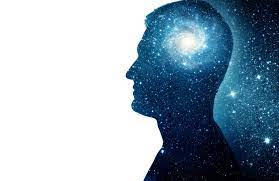External to Internal to Innermost Yoga

In our last meeting of The Yoga Sutra Discussion Group, we had a great conversation about Pratyahara (the drawing of the senses inward) and its role in our lives and practice. In this often not talked about limb of yoga, there is a an amazing opportunity to look deeper not only at ourselves, but at the purpose of the practice of yoga itself. When we loook back at many of the other limbs, the external senses as we know them are already being “drawn inward” – we must “look” at our actions and reactions more closely within the Yamas (moral precepts) and Niyamas (personal observances), our senses of perception are challenged in Asana (postures), and as we close our eyes and put focus on our breath in Pranayama (breath regulation) we also are required to “become more sensitive” to sound and touch. So this Pratyahara that stands alone as a limb of the practice must have a more significant role.
Yoga is seen as having three main “quests” – the external (bahiranga), the internal (antaranga), and the innermost (antaratma). Pratyahara begins our journey from the external practices toward the internal and innermost practices that truly only occur within the realms of mind and consciousness. To “draw our senses” inward from their external disturbances toward our internal experience gets us another step closer to the goal of yoga – “stilling the fluctuations of the consciousness” (Yoga Sutra I.2). To look within, listen within, and feel within is not to cut ourselves off, but to open ourselves up, to clear away habitual disturbance and judgement and challenge our view of the world and of our experience within it.
Instead of external sensory interactions taking priority, in Pratyahara we must look more closely at the mental habits, feelings, and reactions accumulated from past sensory impressions. As we found in a few of the translations and commentaries of The Yoga Sutras, the very make-up of our identity that has been created through memory of all our past experiences is challenged and must be cleared out by Pratyahara. In Rohit Mehta’s Yoga – The Art of Integration, he referes to Pratyahara as “the re-education of the senses”, not merely “withdrawal”.
For instance, a certain smell, sound or image of something ellicits one reaction from me that very likely is completely different than another person. These impressions are just one small conditioned aspect of the very essence of that smell, image, or sound. Yoga asks us to dive deeply into the very essence of all existence, so in the end even these individual impressions must be removed to open up our senses to the unfettered fullness and completeness of each experience.
The vastness and potentials are endless – the internal universe is as amazing and as powerful as the external one. To truly turn all our senses inward is to explore the whole unadulterated truth of everything without filters or judgements or expectations. What an awe-inspiring wonder that would be!
The second chapter of The Yoga Sutras of Patanjali ends the external quest and leads us toward the internal and innermost quests of the mind, consciousness, and spirit. This is where we will take our next discussion, delving into the last three limbs of the 8-limbed practice of yoga – Dharana (concentration), Dhyana (meditation), and Samadhi (ultimate freedom).
The First Three Sutras in the Third Chapter (Vibhuti Pada) (translations given are from BKS Iyengar’s Light on the Yoga Sutras of Patanjali)
III.1 Fixing the consciousness on one point or region is concentration (dharana)
III.2 A steady, continuous flow of attention directed towards the same point or region is meditation (dhyana)
III.3 When the object of meditation engulfs the meditator, appearing as the subject, self-awareness is lost. This is samadhi.
Join us for our next discussion on Sunday, April 25th at 11:00am. We will begin the third chapter of The Yoga Sutras, which is a fascinating and fun chapter to discuss together! Don’t worry if you haven’t joined us before! There is always recap and each discussion stands alone.